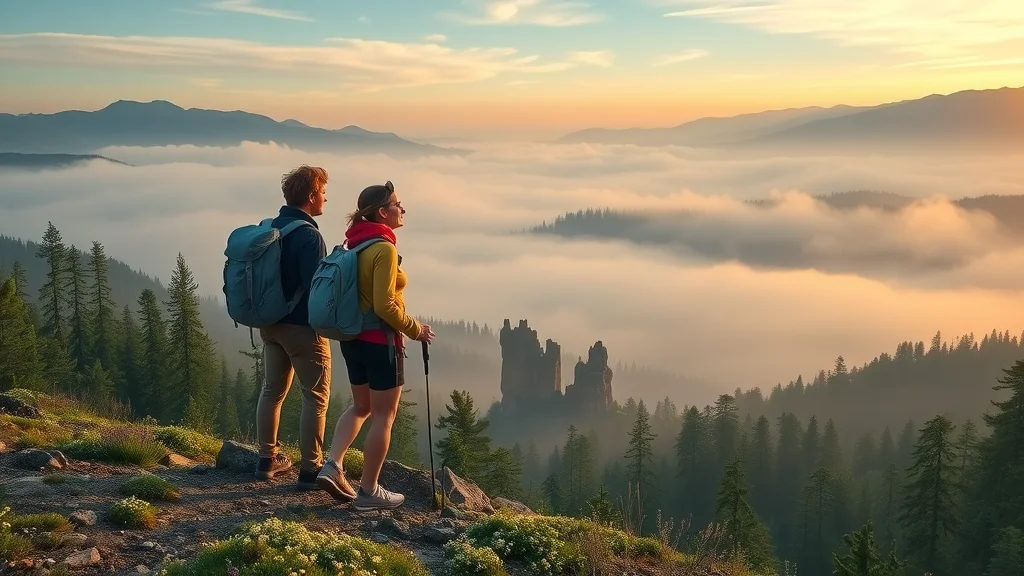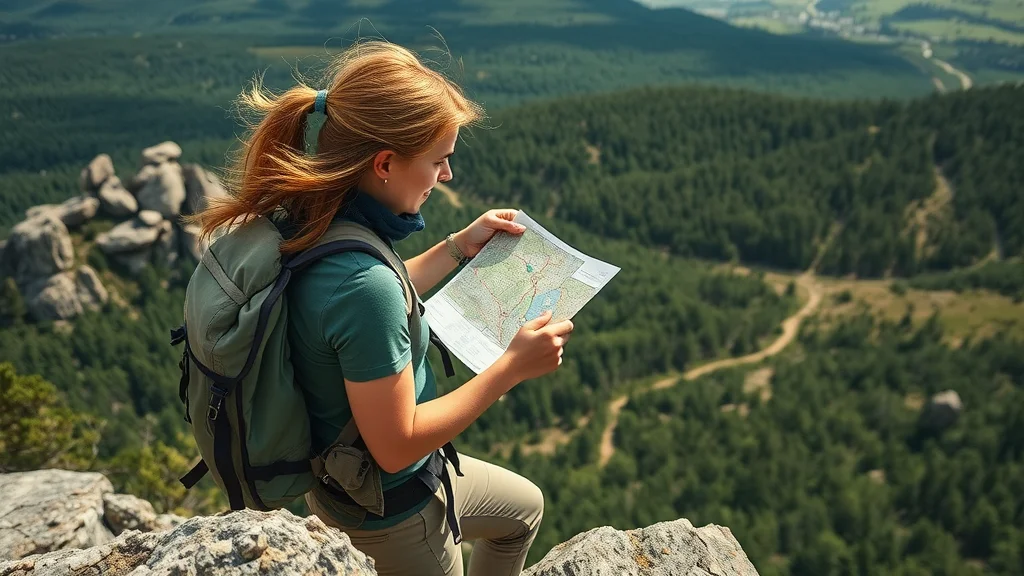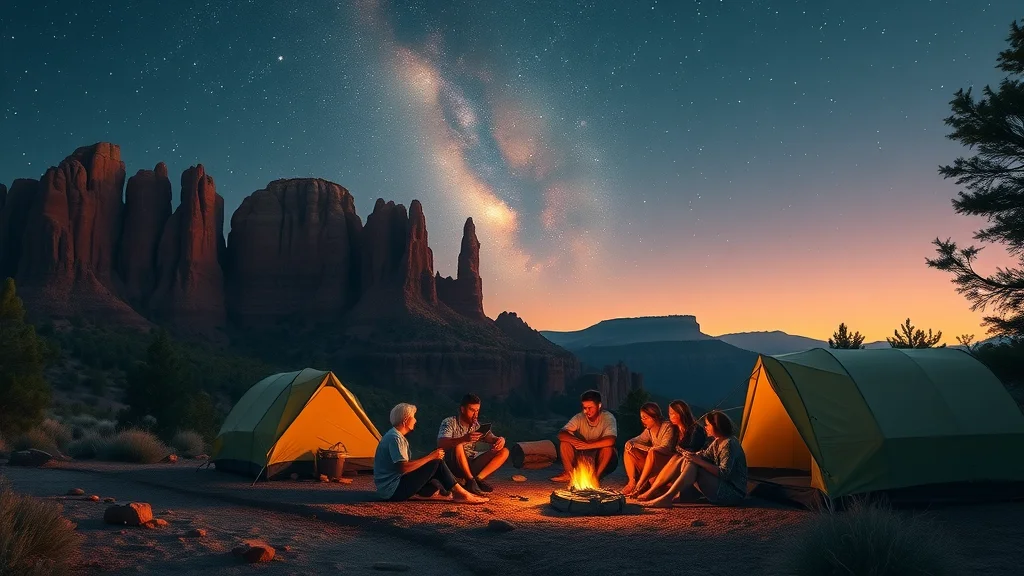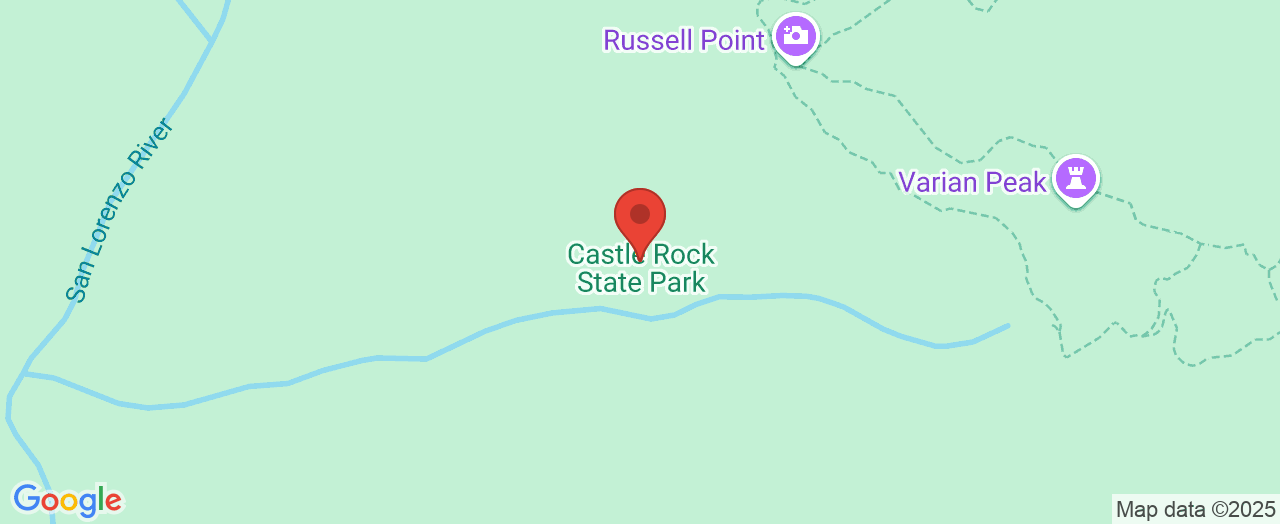Discovering True Freedom: Why Backcountry Trail Camping is the Ultimate Outdoor Experience
Ever wondered what it’s like to trade the buzz of city life for the hushed stillness of wild forests, starry nights, and a sunrise that belongs only to you? Backcountry trail camping doesn’t just offer an escape—it’s a full immersion into California’s untamed beauty and a direct connection to the state’s most spectacular natural treasures. As more people search for challenging adventures and authentic encounters with the natural world, interest in backcountry camping has surged, making it a sought-after activity for those seeking solitude, resilience, and inspiration. Yet beneath the thrill lies an important reality: with access comes responsibility. Understanding how to camp responsibly and safely ensures not only an incredible adventure, but also the preservation of these wild spaces for generations to come.
The value of mastering backcountry trail camping goes beyond just checking another park off your list. California’s state parks—and particularly treasured locations like Castle Rock State Park—protect immense biological diversity and cultural history. While backcountry camping offers freedom and self-discovery, it also asks each adventurer to learn best practices and navigate complex challenges, from unpredictable weather and rugged terrain to minimal resources. These experiences transform ordinary hikes into life-changing journeys, but only when approached with the right knowledge. In this guide, you’ll uncover essential tips, fundamental principles, and powerful benefits that make backcountry trail camping not simply a pastime, but a genuine pathway to discovery and stewardship.

Backcountry Trail Camping Demystified: What Sets It Apart from Ordinary Outdoor Living
At its core, backcountry trail camping is about venturing beyond car campgrounds and established sites to discover the heart of the wild. Unlike front-country camping—which often includes creature comforts and easy access to amenities—backcountry camping plunges you deeper into rugged landscapes where self-sufficiency and preparation reign. This means carrying everything you need on your back, from shelter to food and water filtration, and navigating remote trails where cell phone signals often vanish. For many, this elevated level of challenge is exactly the draw: with each step, you rely more on knowledge and resourcefulness, and less on convenience, cultivating both confidence and adaptability.
Choosing to experience backcountry camping in regions like California isn’t merely a recreational decision—it's an act of trust in yourself and respect for the land. The state’s parks system, encompassing over 280 areas, is shaped by a mission to inspire health, preserve cultural richness, and safeguard natural habitats. When you stride into these protected spaces, you become a steward, responsible for maintaining their delicate balance. Poor preparation can have serious consequences: getting lost, running low on water, or damaging sensitive ecosystems. Conversely, a well-prepared camper enhances not only personal safety but also ensures the wild beauty of places like Castle Rock remains for future explorers. By truly understanding what backcountry trail camping entails, you open up the full range of adventure while actively protecting California’s most valued resources.

Unlocking the Benefits: How Backcountry Trail Camping Enhances Adventure and Conservation
Recognized as a high-quality outdoor recreation offering, backcountry trail camping delivers more than just a change of scenery—it’s a catalyst for inspiration, health, and personal growth. The immersive nature of this pursuit fosters physical resilience, as campers trek through changing terrain and learn to manage limited supplies. However, the benefits are emotional and psychological as well: few activities offer such vivid opportunities to disconnect from digital distractions, embrace mindful solitude, and witness breathtaking sights—from the sculpted formations of Castle Rock to waterfall vistas along the Saratoga Gap. In addition to physical health, these adventures build confidence, problem-solving skills, and a deep appreciation for California’s outdoor legacy.
Equally important is the role campers play as informal ambassadors of conservation. California’s state parks, including Castle Rock, operate with a clear mission to preserve extraordinary biological diversity and protect cultural resources. Engaging in responsible backcountry camping—staying on marked trails, following Leave No Trace principles, and respecting wildlife—ensures these lands remain pristine. By increasing access to varied recreation for California’s diverse population, state parks encourage more people to find personal meaning and stewardship in wild places. Well-prepared campers contribute to this legacy, making backcountry camping a win for both adventurers and the environment they cherish.

Navigating Challenges: What Every Camper Should Know Before Hitting the Trail
Preparing for a backcountry camping trip isn’t just about gear—it’s about understanding the unique landscape and risks of California’s parks. Wildfires, shifting weather, and periods of drought introduce variables that demand thoughtful planning. Knowing how to filter water, manage food responsibly, and read trail markers can be the difference between a smooth journey and a potentially dangerous detour. For beginners and seasoned hikers alike, the basics—like bringing a printed map, packing out all trash, and notifying someone about your route—are non-negotiables. When cell reception is unreliable, as in much of Castle Rock State Park, preparation becomes even more vital.
Awareness of access guidelines and regulations ensures everyone’s safety and protects the area’s ecological health. California State Parks actively support access for all, emphasizing inclusive resources so visitors of every ability can experience nature’s gifts. Utilizing modern tools like the OuterSpatial mobile app or the park’s reservation system can help campers navigate, book sites, and stay updated on trail conditions. In the spirit of stewardship, understanding these challenges isn’t restrictive—it’s empowering, allowing every camper to invent their adventure with confidence and care.
Blending Tradition and Technology: The Evolving Experience of Trail Camping

Backcountry trail camping has come a long way from basic tents and paper maps. Today’s state parks leverage technology—like augmented reality apps and interactive reservation platforms—to enhance both safety and enjoyment. Tools such as OuterSpatial and virtual adventurer applications allow campers to explore California’s cultural and natural heritage before even stepping onto the trail, helping them prepare more thoroughly than ever before. This modern approach deepens the experience by blending age-old wilderness skills with cutting-edge innovations, making nature more accessible without diminishing its magic.
Still, the heart of trail camping is rooted in traditional values—self-sufficiency, respect for the land, and meaningful connection with nature. Those who heed both old wisdom and new tools find themselves best equipped to face the unpredictabilities of the wild, from sudden weather changes to navigating convoluted trail networks. As California celebrates milestones like its 175th year of statehood, backcountry campers become living participants in the ongoing story of the land, using a blend of tradition and technology to protect and enjoy it.
Financial Accessibility and Inclusivity Open New Pathways for Outdoor Exploration
Access to California’s diverse park system is an evolving priority, with concerted efforts aimed at welcoming campers from all backgrounds. Initiatives like annual passes and varied reservation options lower barriers, making high-quality backcountry experiences more affordable and attainable. The state’s grants and expanded recreation programs directly serve people who might otherwise be excluded, supporting projects from park renovations to educational outreach in local communities.
These improvements are more than conveniences—they reflect a commitment to relevance and representation. Special events, heritage celebrations, and arts in the parks deepen the connection between communities and wild spaces, building a new generation of outdoor stewards. By making trail camping a realistic adventure for all, California’s parks system models an inclusive vision: the more people experience the thrill and challenge of the backcountry, the stronger the cause for its lasting protection.
Castle Rock State Park’s Commitment to Inspiration, Education, and Preservation on the Trail
Castle Rock State Park, as a part of California’s park system, stands out for its dedication to high-quality outdoor recreation, transformative education, and unwavering stewardship of natural and cultural treasures. The park’s mission extends beyond providing scenic trails; it aims to inspire visitors and spark a lifelong respect for the wild. By safeguarding rare ecosystems and facilitating informed, inclusive access, Castle Rock cultivates a model in which each camper becomes a guardian of the land, not just a passerby.
This philosophy is embedded in the park’s daily operations—offering detailed trail maps, maintaining marked routes, improving accessibility, and educating visitors on sustainable practices amid challenges such as wildfires and climate impact. Through expanding recreation opportunities, supporting creativity, and fostering deeper understanding of cultural histories, Castle Rock embodies the very best of California’s outdoor ethos. Every backcountry camper here participates in a living tradition: exploring, learning, and preserving, not simply consuming nature but giving back to it.
Whether one is a seasoned backpacker or experiencing backcountry camping for the first time, Castle Rock’s approach ensures that all visitors have the resources, guidance, and support necessary to thrive and reconnect with the natural world. This inclusive, forward-looking philosophy propels the park as a leader in outdoor recreation—and positions every visitor as part of something larger: the ongoing story of conservation and inspiration.
What Real Campers Say: One Memorable Backcountry Experience
For many, the most compelling endorsements of trail camping are the stories of those who’ve faced its challenges and found its rewards. Success in the backcountry is measured not by distance, but by the moments of awe and accomplishment that linger long after the hike is over. Here’s how one visitor describes their adventure at Castle Rock State Park:
A few weeks ago I hiked the Castle Rock Loop Trail and Saratoga Gap, which were amazing and relatively easy to hike. Parking was easy to find, with many trail maps and guides available. Castle Rock was a pretty amazing sight, interestingly shaped and great for photos. While walking on the Saratoga Gap trail, I came to the vista pointe, which had breathtaking views and a waterfall coming down the rocks. The elevation change overall isn't too bad, and the trails are very well marked. Overall a great place to hike and enjoy spectacular views!
This firsthand account illustrates the rewards of preparation, clear navigation, and mindful enjoyment of natural wonders. Future campers who prepare as carefully can expect their own moments of awe, a sense of accomplishment, and memories to treasure long after leaving the wild behind. Taking the leap into backcountry trail camping opens doors to both personal transformation and deeper connection with California’s most beloved landscapes.
Is Backcountry Trail Camping the Gateway to Deeper Connections with California’s Parks?
Backcountry trail camping isn’t simply about toughing it out in the wild—it’s about forming bonds: with yourself, your companions, and the land itself. This increasingly popular adventure asks more, gives more, and shapes stewards for tomorrow. By learning the skills, respecting the rules, and supporting the mission of trail-preserving organizations, every camper steps into a tradition that combines discovery with protection. Castle Rock State Park’s commitment to inspiration, education, and ecological stewardship exemplifies the very best of California’s outdoor legacy. So as you lace up your boots and plan your next excursion, remember that backcountry trail camping offers more than a backdrop for adventure—it’s an opportunity to grow, to give back, and to experience nature as it was always meant to be: profound, wild, and yours to explore with care.
Contact the Experts at Castle Rock State Park
If you’d like to learn more about how backcountry trail camping could benefit your outdoor experience, contact the team at Castle Rock State Park.
📍 Address: 15451 CA-35, Los Gatos, CA 95033, USA
📞 Phone: +1 408-868-9540
🌐 Website: http://www.parks.ca.gov/
Castle Rock State Park Location and Availability
🕒 Hours of Operation: Please refer to the official park website or contact the visitor center for current hours of operation as they may vary due to seasonal adjustments and maintenance schedules.

 Add Row
Add Row  Add
Add 





Write A Comment